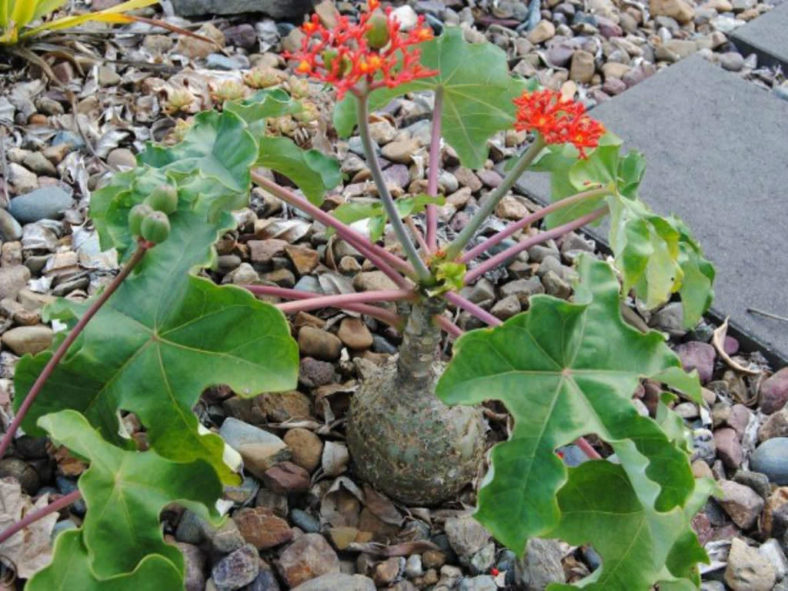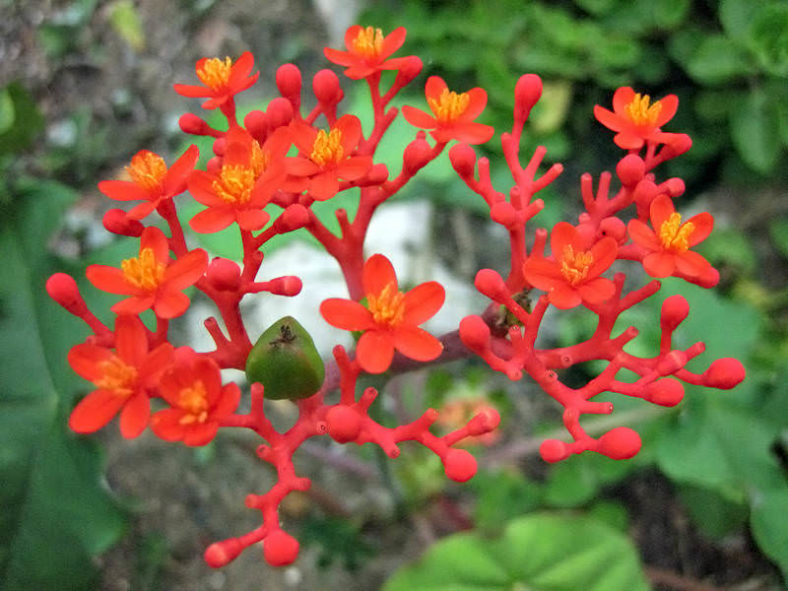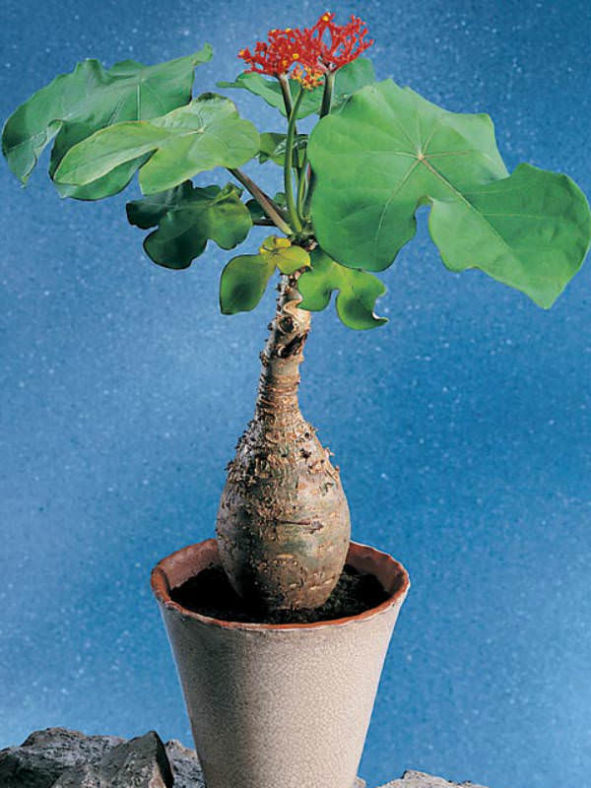Scientific Name
Jatropha podagrica Hook.
Common Name(s)
Buddha Belly Plant, Buddha Belly, Bottleplant Shrub, Bottle Euphorbia, Purgingnut, Gout Plant, Gout Stick, Purging Nut, Guatemalan Rhubarb, Guatemala Rhubarb, White Rhubarb, Goutystalk Nettlespurge, Tartogo
Scientific Classification
Family: Euphorbiaceae
Subfamily: Crotonoideae
Tribe: Jatropheae
Genus: Jatropha
Etymology
The specific epithet "podagrica" (pronounced "pod-AG-ree-kuh") means "used for gout treatment" and refers to the medicinal use of this species in treating gout.
Origin
This species is native to Mexico (Chiapas, Oaxaca, Veracruz), Guatemala, Honduras, and Nicaragua.
Description
Jatropha podagrica is a tropical succulent shrub with an erect, sparsely branched stem, which is swollen at the base and has large, persistent or semievergreen leaves. It can grow up to 6.6 feet (2 m) tall. The leaves are shield-shaped with 3 to 5 lobes, nitid green on the upper surface, gray-green on the lower surface, measuring up to 8 inches (20 cm) long and nearly equal in diameter.
Clusters of small, bright red male and female flowers appear in dense clusters above the leaves on long, slim peduncles almost all year round. The fruits are capsules, green at first, becoming blackish-brown at maturity when they explode and scatter the seeds up to 13 feet (4 m) away.

Hardiness
USDA hardiness zone 10a to 11b: from 30°F (-1.1°C) to 45°F (7.2°C).
How to Grow and Care
The key to growing successful Jatropha is to balance moisture and drainage properly. They typically appreciate a steady water supply, but the most popular species cannot tolerate being submerged or soaked and will quickly succumb to root rot. Many popular Jatropha species make excellent small trees for a conservatory or sunny corner. Keep them well pruned, so they don't outgrow their space too soon. Jatropha is vulnerable to pests, including aphids, mealybugs, scale, and whitefly. Identify the infestation as early as possible and treat it with the least toxic option.
Jatropha can be propagated by seed (if you're fortunate enough to get seeds) or stem cuttings. To take stem cuttings, remove a small piece of stem, dip it in rooting hormone, and put it into a small pot with seedling starter soil. Place the pot in a warm, bright place and wait for new growth to emerge.
See more at How to Grow and Care for Jatropha.
Cultivars
Links
- Back to genus Jatropha
- Succupedia: Browse succulents by Scientific Name, Common Name, Genus, Family, USDA Hardiness Zone, Origin, or cacti by Genus
Photo Gallery
Click on a photo to see a larger version.


